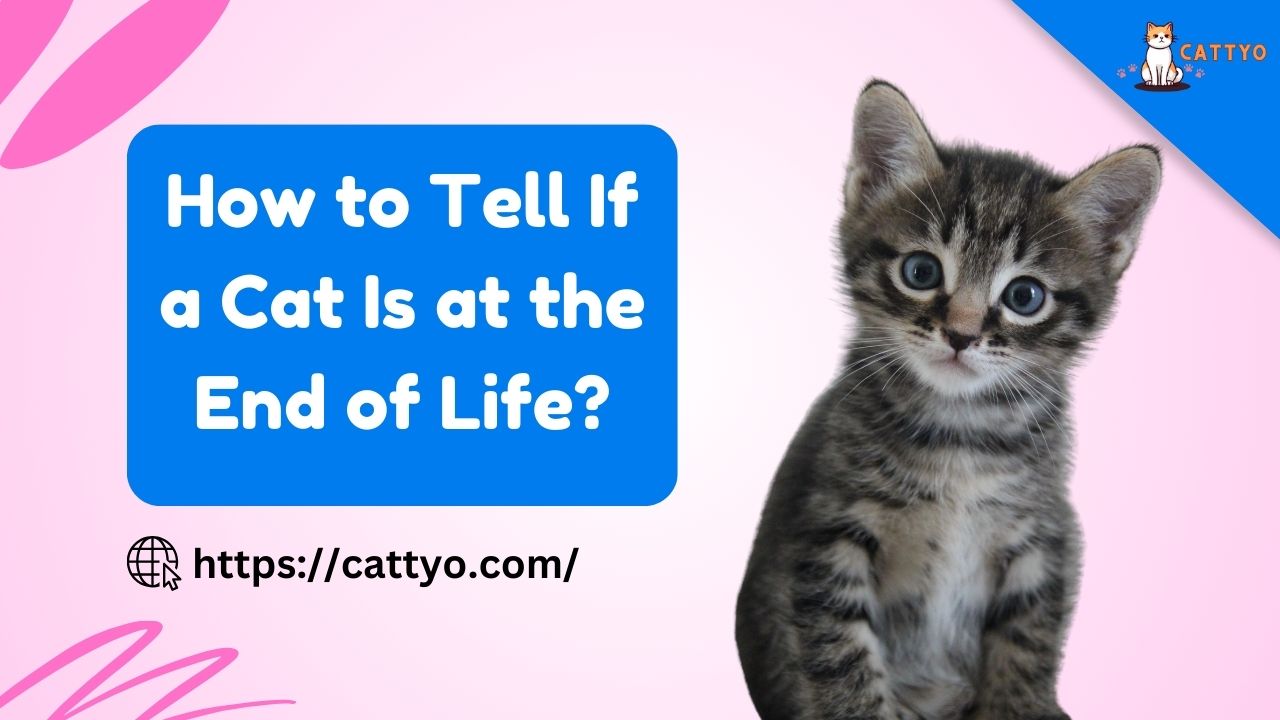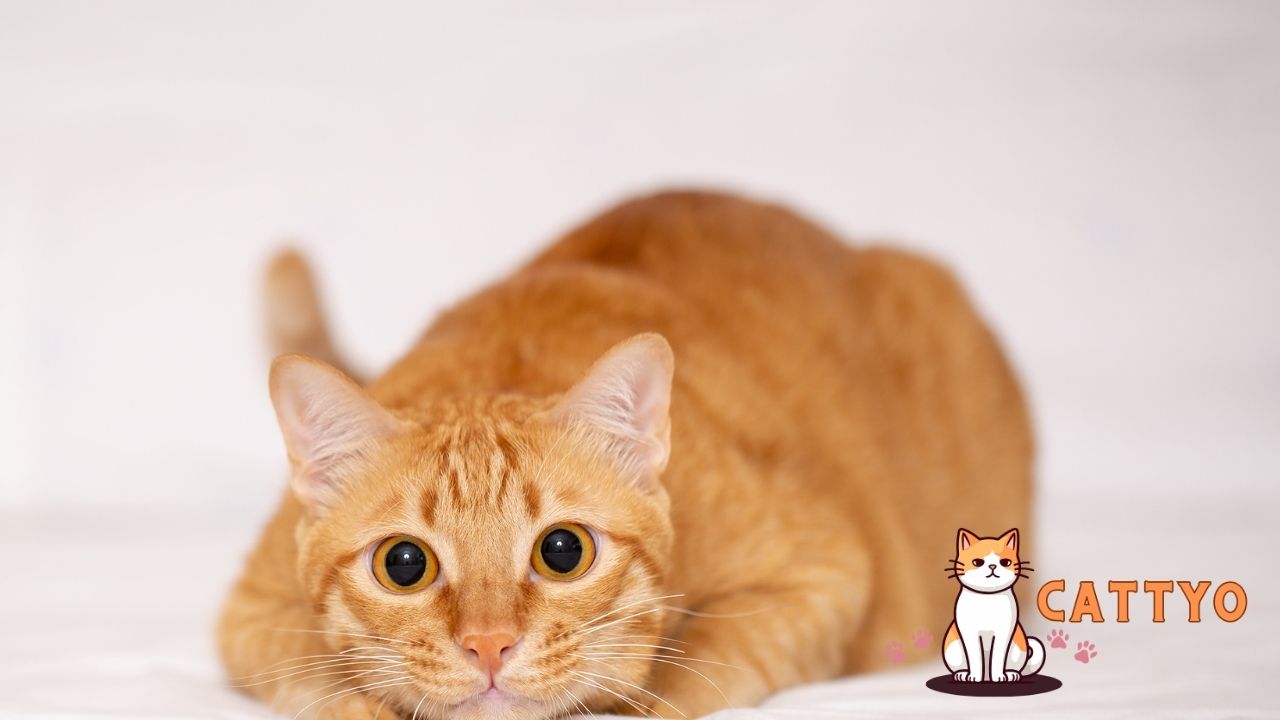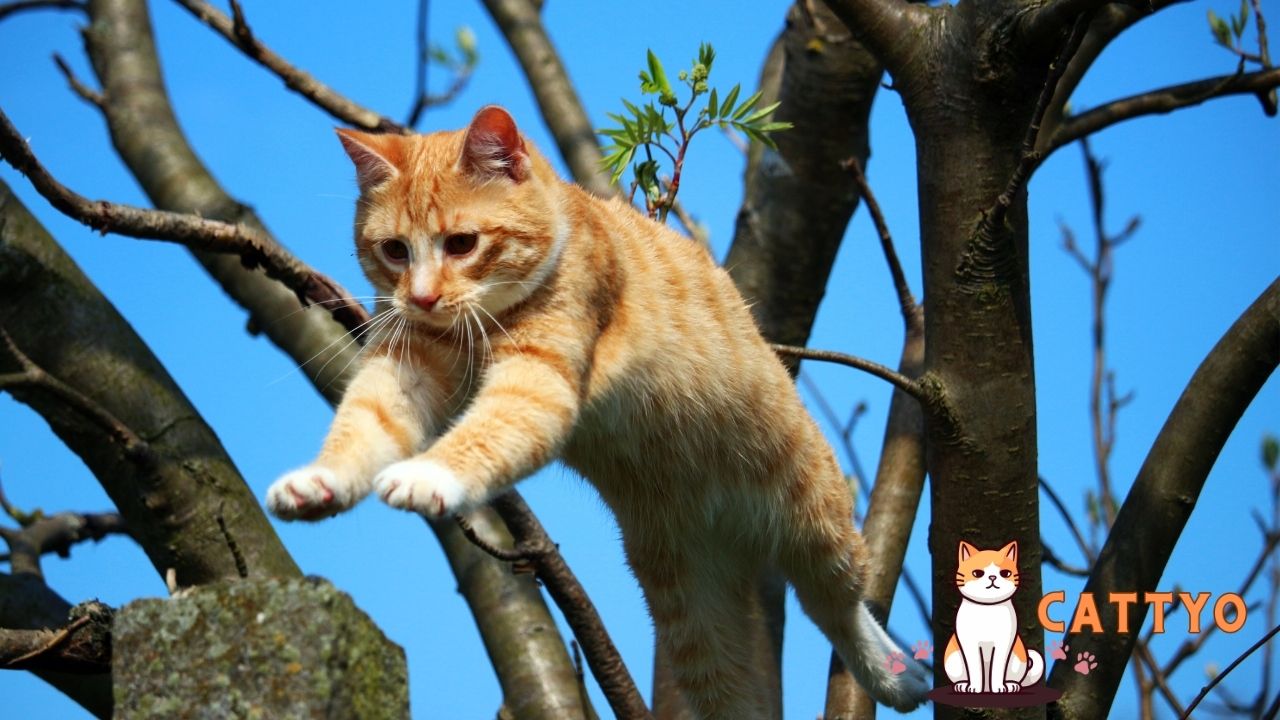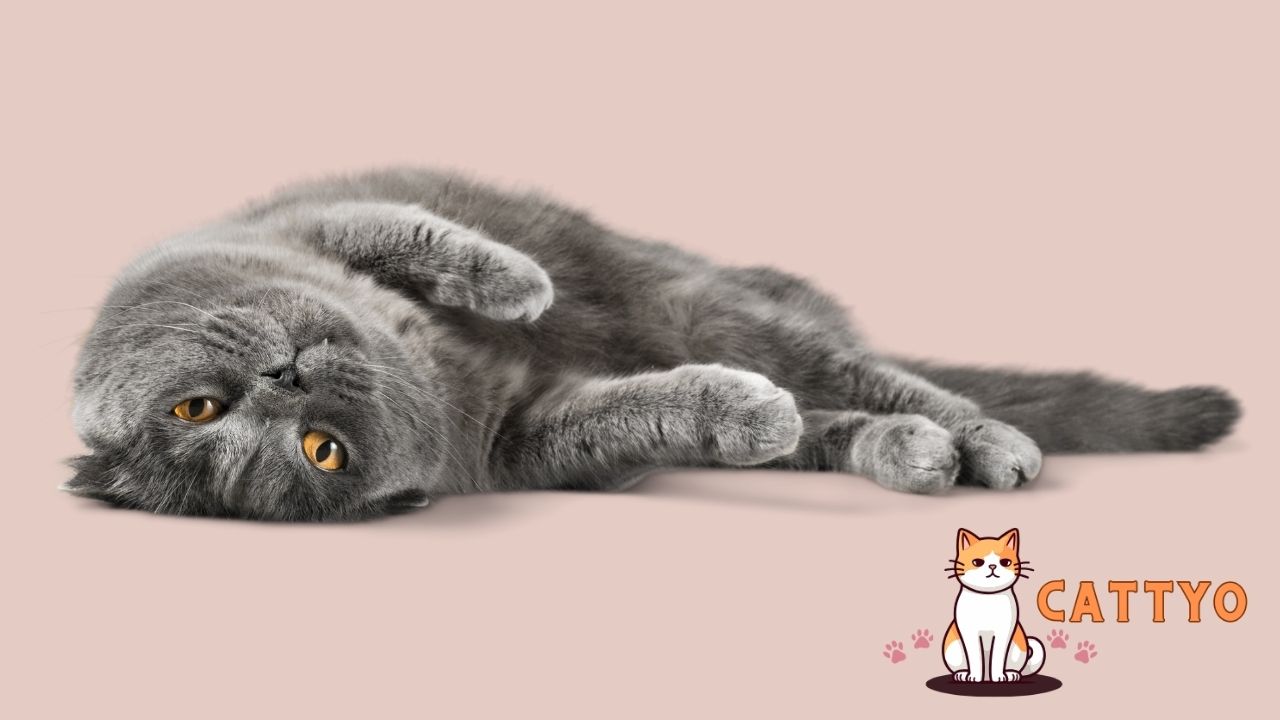Spotting end-of-life signs in your cat involves noticing changes in behavior, appetite, mobility, and overall health. Recognizing these indicators helps you provide comfort and make compassionate care decisions during their final days.
Cats are beloved companions that hold a special place in our hearts. They bring joy, comfort, and endless entertainment, so it’s never easy to face the possibility that our feline friends may be nearing the end of their lives.
How to tell if a cat is at the end of life? is one of the most difficult questions every pet owner may have to ask. It’s a heartbreaking reality, but understanding the signs can help you prepare for the inevitable while ensuring your cat’s comfort and well-being.
In this article, we’ll explore the signs that indicate a cat may be nearing the end of their life, as well as provide tips for making their final days more peaceful.
We’ll also discuss the physical, emotional, and behavioral changes that often occur as a cat’s health declines, so you can be more attuned to what your cat needs during this time.
How to Tell If a Cat Is at the End of Life?
Identifying when your cat is approaching the end of life can be emotionally difficult. By observing changes in behavior, appetite, mobility, and overall health, you can recognize the signs that your feline friend may be nearing their final days. Understanding these indicators allows you to provide the necessary comfort, make informed decisions about their care, and cherish the precious moments you have together.
Key Signs Your Cat May Be Approaching End of Life:
Significant Weight Loss: Noticeable decrease in body weight despite normal or reduced food intake.
Decreased Appetite and Thirst: Less interest in eating or drinking, or complete refusal of food and water.
Reduced Mobility and Lethargy: Difficulty moving, reluctance to jump or climb, and increased sleep.
Changes in Breathing: Shallow, rapid, or irregular breathing patterns.
Poor Coat Condition: Dull, unkempt fur, excessive shedding, or difficulty grooming.
Incontinence or Changes in Elimination Habits: Loss of control over bladder or bowels, or changes in litter box use.
Behavioral Changes: Withdrawal, hiding, decreased interaction, or increased irritability.
Weakness and Fatigue: General weakness, inability to stand or walk without assistance.
Signs of Pain or Discomfort: Vocalization, restlessness, or guarding certain body parts.
Loss of Interest in Environment: Lack of response to familiar sounds, people, or stimuli.
Increased Sleeping: Spending most of the day sleeping with little to no activity.
Changes in Body Temperature: Cooler extremities or overall body temperature fluctuations.
Seizures or Neurological Signs: Uncontrolled seizures, tremors, or disorientation.
Loss of Consciousness: Periods of unconsciousness or unresponsiveness.
Pallor of Gums and Mucous Membranes: Pale gums can indicate poor circulation or anemia.
What to Do If You Notice These Signs:
- Consult Your Veterinarian:
Seek professional advice to confirm your cat’s condition and discuss care options. - Provide Comfort:
Create a peaceful and comfortable environment, minimizing stress and disturbances. - Maintain Hydration and Nutrition:
Offer easy-to-eat foods and ensure access to fresh water, but respect your cat’s appetite changes. - Manage Pain:
Follow your vet’s recommendations for pain relief to ensure your cat is as comfortable as possible. - Spend Quality Time:
Offer gentle affection and companionship, cherishing the moments you have together. - Consider Palliative Care:
Explore options for hospice care to support your cat’s comfort in their final days.
Recognizing these signs early allows you to provide compassionate care and make informed decisions to ensure your cat’s comfort and dignity during their final stages of life.
The Subtle Signs That Your Cat May Be Nearing the End of Life
It’s natural to want to know how to tell if a cat is at the end of life, but the signs are often subtle and develop gradually.
Cats are known for hiding their pain, and they are experts at masking their discomfort. As a result, it may be challenging to recognize when they’re approaching the end of their journey.
However, some key changes can signal that your cat’s time may be drawing near.
1. Significant Weight Loss
As cats age or become seriously ill, they may experience a loss of appetite, leading to significant weight loss. This weight loss can be a major indicator that something is wrong. If your cat is eating less or not eating at all, and you notice that they seem skinnier than usual, it could signal that their body is no longer functioning as it should.
If you’re unsure, a trip to the vet is essential to determine if there’s an underlying medical issue causing the weight loss.
2. Decreased Activity and Lethargy
One of the most common signs that a cat may be nearing the end of life is a noticeable decrease in energy. Cats that once loved to play, explore, and interact with their humans may become less active. They may sleep more than usual, even during the day, and have a disinterest in activities that once brought them joy.
3. Difficulty Breathing
Breathing changes can be an alarming sign. If your cat is having trouble breathing, it may be indicative of heart failure, respiratory disease, or another serious condition. Difficulty breathing can also manifest as rapid breathing, shallow breaths, or labored breathing.
If your cat is showing signs of respiratory distress, it’s important to seek immediate veterinary care.
4. Changes in Grooming Habits
Cats are meticulous groomers, and a sudden drop in grooming behavior can be a red flag. If your cat begins to neglect their grooming, their fur may appear matted, greasy, or unkempt. This could be a result of physical discomfort, weakness, or simply an inability to groom themselves as they once did. In some cases, it may also indicate neurological problems or pain.
5. Loss of Interest in Socializing
Cats that are nearing the end of their life may begin to withdraw from social interactions. They might stop seeking affection or hide more frequently. This change in behavior may stem from exhaustion or discomfort. If your once-social cat is suddenly hiding more or avoiding human interaction, it could be a sign of declining health.
6. Incontinence and Litter Box Issues
As cats age, they may begin to have difficulty controlling their bladder or bowels. If your cat is suddenly urinating outside the litter box or having frequent accidents, it may be due to a medical issue. Incontinence can also be a sign that their body is no longer able to function properly.
7. Changes in Eating and Drinking Habits
If your cat is no longer eating or drinking as much as they used to, this could be a sign that their body is shutting down. Cats with advanced kidney disease, cancer, or other illnesses may experience a lack of appetite. If your cat refuses to eat for more than 24 hours, it’s time to consult with your vet.
8. Signs of Pain or Discomfort
Pain is a significant sign that your cat may be nearing the end of their life. You may notice signs such as:
- Limping or difficulty moving
- Sensitivity when touched
- Changes in posture
- Restlessness or constant shifting of position
Pain can often be difficult to detect, as cats hide it well, but subtle changes in behavior and posture can be an indicator.
9. Respiratory Changes or Odd Breathing Sounds
In some cases, as cats near the end of their life, they may develop labored or irregular breathing. This can include gasping, wheezing, or even a rattling sound when they exhale. If these symptoms are present, it’s critical to get your cat to the vet for assessment.
10. Unusual Vocalizations
Cats nearing the end of their lives may begin to vocalize more often, either through crying, yowling, or meowing in a distressed or confused manner. If your cat is vocalizing more than usual or making strange sounds, they may be experiencing discomfort or confusion, which could be linked to illness or pain.
How to Care for a Cat at the End of Life
Once you recognize the signs that your cat is nearing the end, it’s essential to provide compassionate care to help them live comfortably during this time. Here are some tips for caring for a cat nearing the end of their life.
1. Provide a Comfortable Space
Make sure your cat has a comfortable, quiet place to rest. Avoid placing them in areas with loud noises or frequent foot traffic. A soft, warm bed in a calm corner of your home can provide them with the peace and comfort they need.
2. Ensure They Have Easy Access to Food and Water
If your cat has trouble moving around, place food and water bowls close to them. If they’re having trouble eating, try offering them soft, easily digestible food, such as wet cat food or baby food. You may also want to consider giving them treats or supplements recommended by your vet to help maintain their strength.
3. Pain Management
Pain management is a crucial part of end-of-life care. Your vet can provide medications to help alleviate discomfort. Never give your cat pain medication meant for humans, as it can be toxic to cats. Speak to your vet about safe options for managing your cat’s pain.
4. Monitor Their Condition Closely
Keep an eye on your cat’s physical condition and behavior. Look for any signs of worsening symptoms and consult with your vet about any changes. Regular check-ups can help ensure your cat’s comfort and guide you through the process of letting them go when the time comes.
5. Consider Euthanasia
In some cases, the most compassionate decision may be to let your cat go peacefully through euthanasia. Your veterinarian can guide you through this decision and help you understand if it’s the right choice. This can be a tough decision, but keeping your cat’s comfort in mind is the best way to ensure their final days are peaceful.
FAQs About Cats Nearing the End of Life
Q: How can I tell if my cat is in pain?
Cats are great at hiding pain, but look for signs such as limping, sensitivity to touch, changes in posture, and a decrease in activity. If you notice any of these, it’s important to consult your vet.
Q: Is it normal for my cat to stop eating at the end of life?
Yes, a decrease in appetite or refusal to eat can be a common sign that a cat is nearing the end of their life. Make sure to monitor their hydration and consult your vet about how to manage their nutrition.
Q: Should I be worried if my cat is hiding more often?
Increased hiding can be a sign of discomfort or distress, particularly if your cat is also showing other signs of illness. If hiding becomes more frequent, consult your vet to rule out underlying health issues.
Final Thoughts
Understanding how to tell if a cat is at the end of life is one of the most challenging things a pet owner can face. Recognizing the signs and knowing how to provide comfort can make a world of difference for both you and your feline companion.
While it’s a painful and emotional journey, being informed and prepared can ensure your cat’s final days are filled with love, comfort, and peace.






